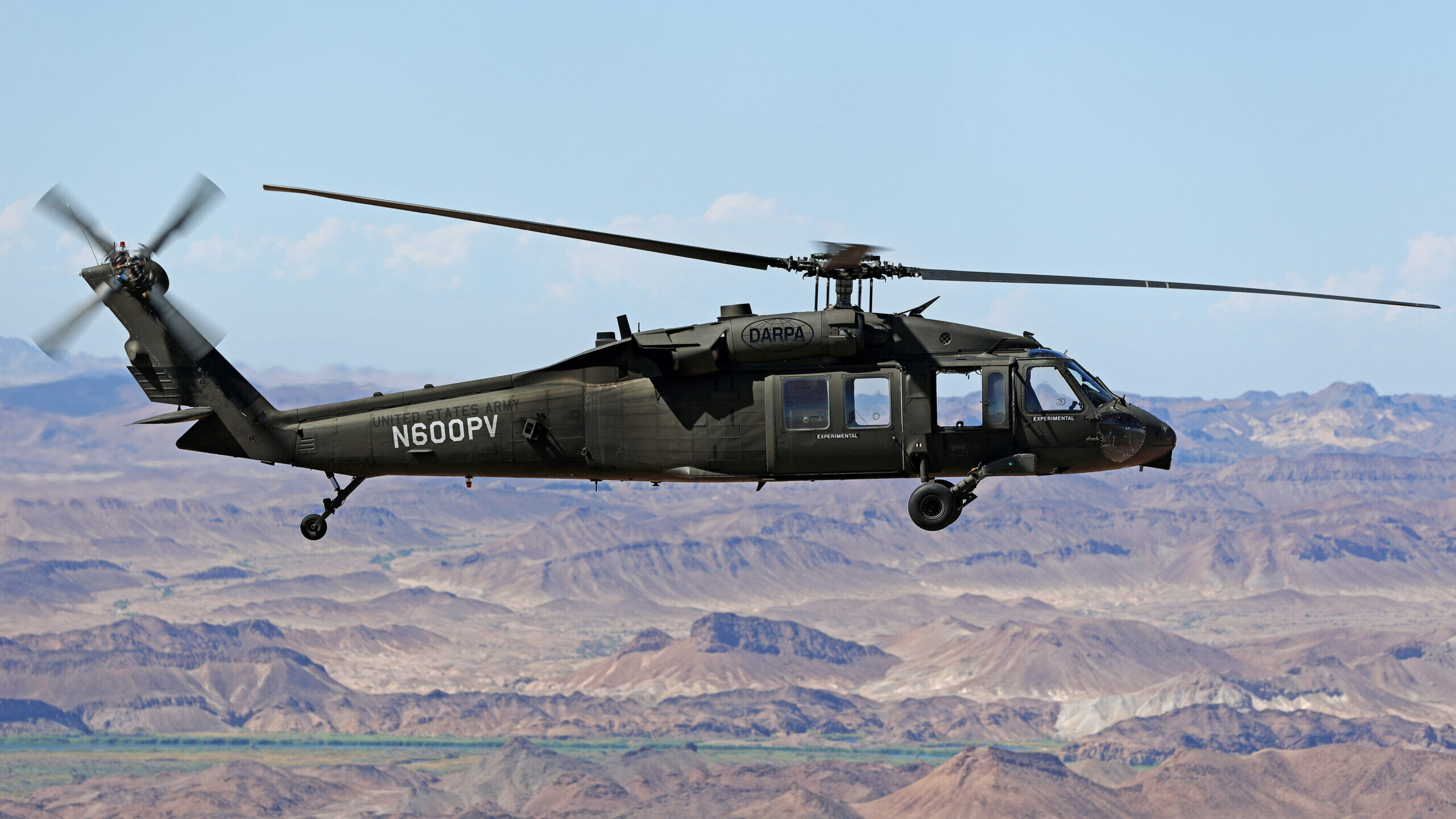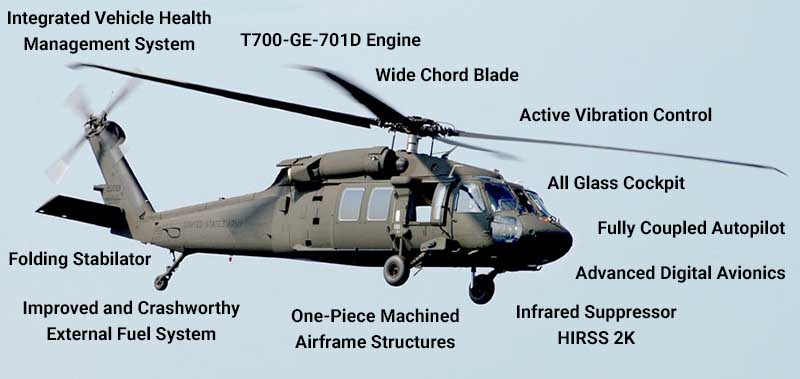Why the UH 60 Remains Among the Most Reliable Helicopters in Service Today
Why the UH 60 Remains Among the Most Reliable Helicopters in Service Today
Blog Article
UH-60: Technologies in Modern Helicopter Design
The UH-60 helicopter stands as a benchmark in modern aeronautics, showcasing substantial advancements in style and modern technology that provide to the advancing demands of military procedures. As we check out the advancement and vital developments of the UH-60, it comes to be crucial to think about how these advancements influence not just existing applications but also the future landscape of helicopter layout.

Advancement of the UH-60
The development of the UH-60 Black Hawk helicopter stands for a significant milestone in aerospace design and army aeronautics. Presented in the late 1970s, the UH-60 was designed by Sikorsky Airplane to meet the United States Army's requirement for a versatile utility helicopter capable of performing a selection of objectives. Its style emphasized ability to move, resilience, and rate, establishing brand-new requirements for operational performance.
The UH-60 includes a distinct four-blade blades system, which improves lift and security, allowing it to operate properly in varied settings. Its airframe is created from innovative composite materials, adding to a decrease in weight while maintaining architectural stability. The helicopter's layout also incorporates enhanced the rules of aerodynamics, which improves fuel effectiveness and enhances range.
Throughout the years, the Black Hawk has actually undergone several upgrades to enhance its capacities, including improved engines, progressed flight control systems, and modular systems for easy maintenance and flexibility. The helicopter's capability to do objectives ranging from troop transport to medical discharge has actually strengthened its function as a backbone of U.S. military operations. The UH-60 Black Hawk continues to be a prime instance of exactly how innovation in helicopter layout can considerably affect military efficiency and functional versatility.
Advanced Avionics Equipments
Advancements in avionics systems have transformed the capabilities of modern helicopters like the UH-60 Black Hawk, boosting functional effectiveness and situational understanding (UH 60). The integration of sophisticated avionics permits for boosted interaction, trip, and navigating monitoring, making the UH-60 extra functional in varied objective accounts
Among the key attributes is the sophisticated electronic cockpit, which utilizes multifunction displays that supply real-time data, making certain pilots have prompt access to vital trip information. This streamlining of details lessens pilot work and boosts decision-making processes throughout facility operations. In addition, the unification of GPS and inertial navigation systems makes it possible for specific positioning and course preparation, improving goal execution in tough environments.
Moreover, advanced avionics systems enhance interaction capacities via secure data web links and voice communication systems, enabling seamless control with ground forces and other aircraft. The assimilation of automated flight control systems additionally contributes to boosted stability and control, especially in unfavorable weather conditions or throughout low-altitude maneuvers.
Engine and Efficiency Enhancements
Engine efficiency in modern helicopters has actually taken a significant leap forward, driven by advancements that enhance dependability, power, and efficiency. At the leading edge of these developments is the adoption of even more effective turboshaft engines, especially those employing sophisticated products and innovations that allow greater temperature tolerances and raised drive abilities. The UH-60 Black Hawk, as an example, uses the T700-GE-701C engine, which includes a dual-channel, full-authority digital engine control system. This system improves efficiency while optimizing gas consumption and lowering upkeep needs.
In addition, the integration of engine health tracking systems permits for real-time diagnostics and anticipating maintenance, substantially enhancing functional dependability. These systems not only sharp staffs to possible problems before they come to be vital however likewise help with a lot more reliable maintenance organizing, thus decreasing downtime.

Materials and Structural Innovations
Recent advancements in products and structural layout have actually transformed modern helicopter construction, enhancing both performance and sturdiness. The intro of innovative composite products, such as carbon fiber strengthened polymers, has significantly decreased weight while maintaining structural stability. This shift not only improves gas performance yet additionally enhances payload capability, enabling helicopters like the UH-60 to perform more diverse missions.
In addition, developments in light weight aluminum alloys and titanium parts have actually added to improved resistance to rust and exhaustion, prolonging the lifespan of vital airframe components. The critical usage of these materials has led to a reduction in upkeep requirements and boosted total operational preparedness.

Moreover, the integration of computer-aided layout (CAD) and additive production modern technologies has actually made it possible for much more light-weight structures and complicated geometries, enhancing the wind resistant efficiency of helicopter layouts. These improvements assist in fast prototyping and production, allowing producers to react quickly to developing mission requirements.
Safety And Security and Survivability Features
Security and survivability features in modern-day helicopter design have ended up being paramount, mirroring the boosting demands for objective efficiency in tough settings. The UH-60 Black Hawk, a remarkable Continue example, integrates advanced modern technologies to enhance staff and traveler security.
The helicopter additionally uses a ballistic protection system, which consists of armored team seats and vital systems shielding, reducing susceptability to tiny arms fire and shrapnel. Improved situational awareness is achieved with advanced avionics and sensing unit innovations, permitting pilots to spot and prevent risks properly.
In addition, the combination of redundancy in crucial systems-- such as twin engines and numerous flight control channels-- makes sure ongoing procedure also if one system falls short. The UH-60 is furnished with innovative emergency situation flotation protection devices, improving survivability in water landings. Jointly, these attributes not only boost the safety of personnel yet likewise enhance goal success rates in aggressive settings, demonstrating the dedication to quality in helicopter layout.
Final Thought
The UH-60 helicopter represents a significant innovation in contemporary air travel technology, incorporating ingenious products, cutting-edge avionics, and durable safety attributes. On the whole, the UH-60 offers as a benchmark for future advancements in helicopter style, symbolizing resilience and versatility in modern armed forces operations.
The UH-60 helicopter stands as a criteria in modern-day aviation, showcasing substantial advancements in layout and modern technology that cater to the evolving needs of army procedures. As we check out the evolution and essential advancements of the UH-60, useful link it ends up being vital to think about just how these advancements affect not only existing applications however additionally the future landscape of helicopter style.
Introduced in the late 1970s, the UH-60 was made by Sikorsky Airplane to meet the United States Army's demand for a functional energy helicopter qualified of performing a variety of objectives. The UH-60 Black Hawk remains a prime example of how innovation in helicopter layout can significantly influence armed forces performance and functional versatility.
Generally, the UH-60 offers as a criteria for future advancements in helicopter style, embodying resilience and convenience in contemporary military procedures.
Report this page